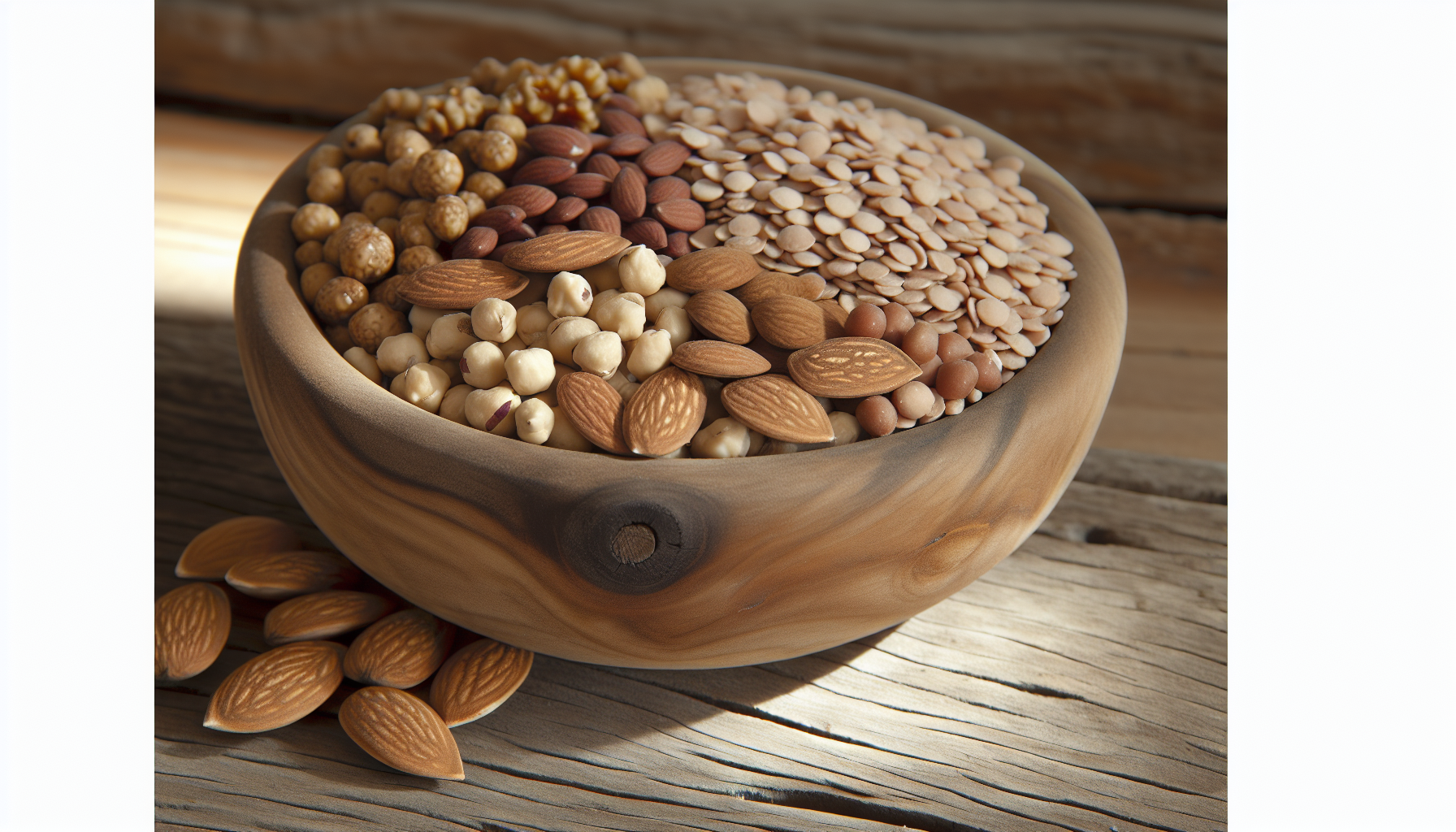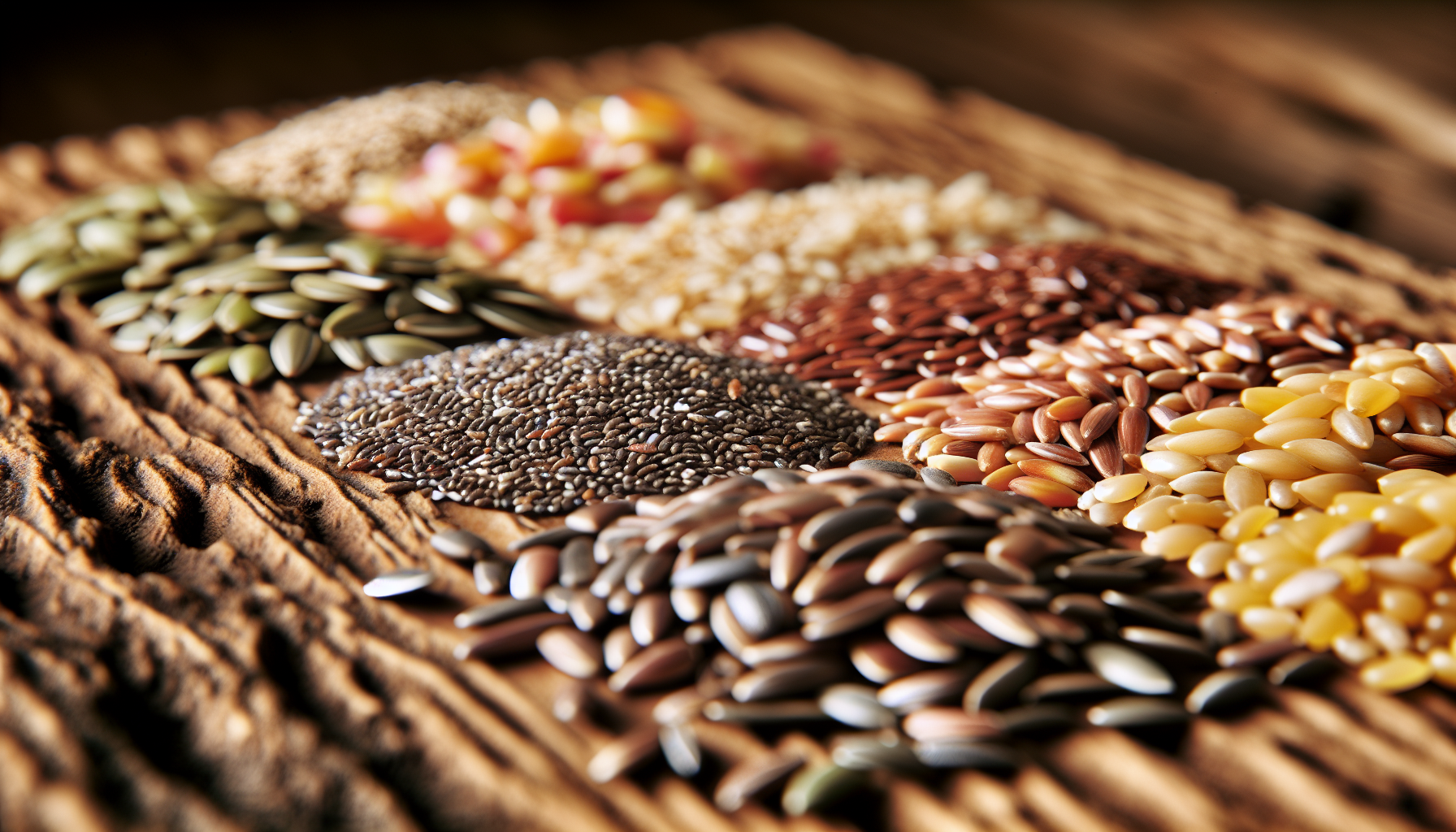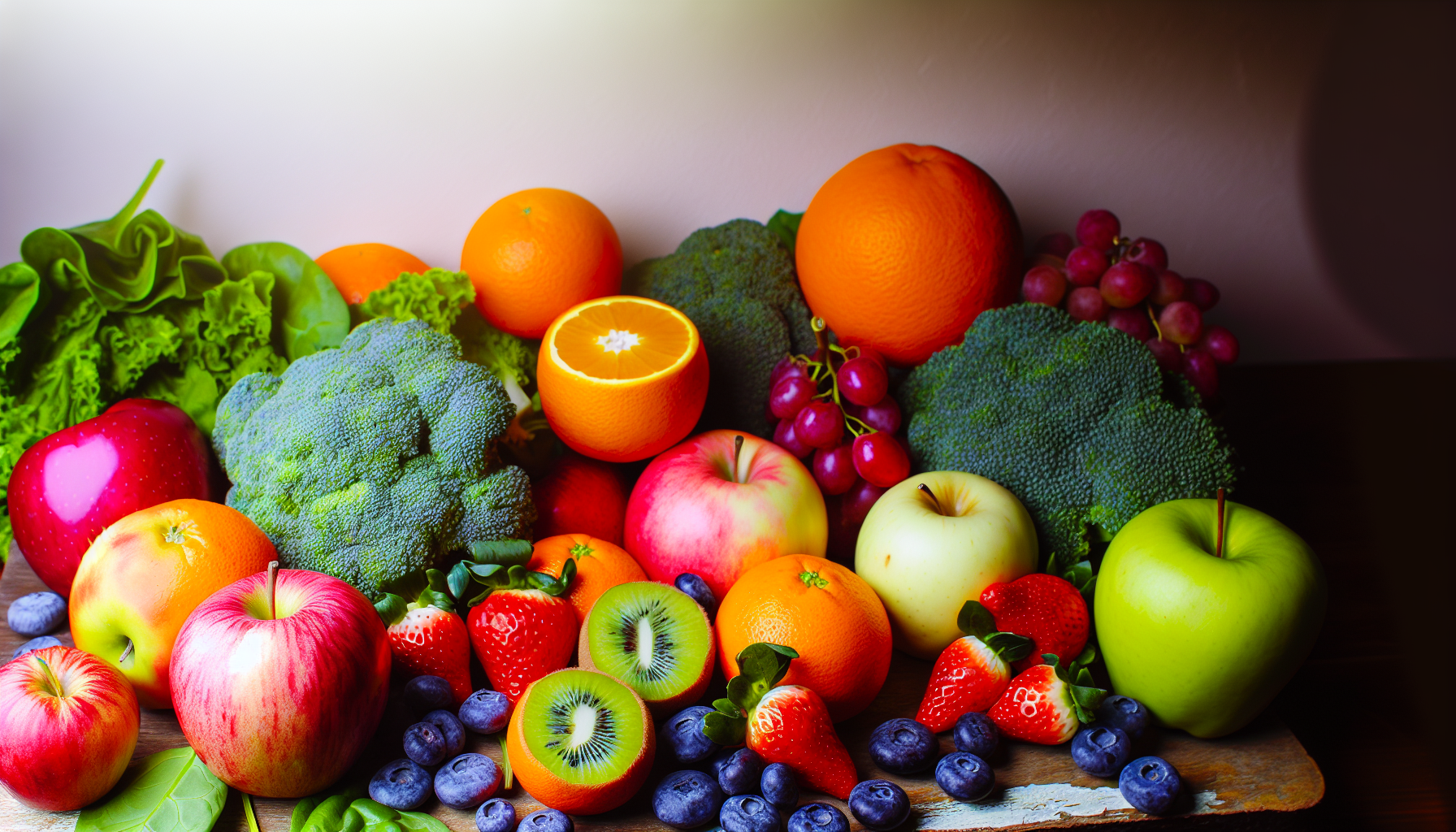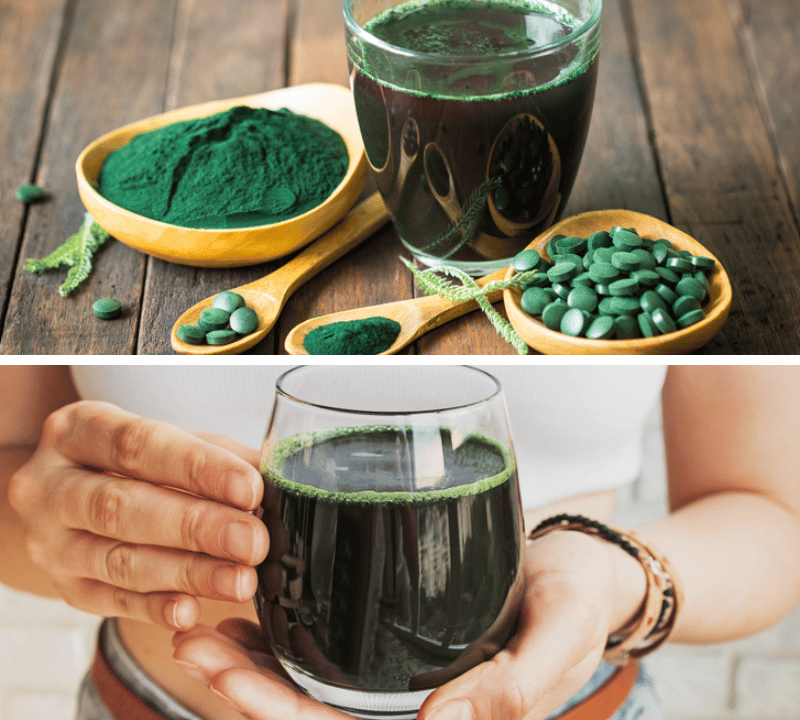Have you ever wondered how your body performs complex functions seamlessly? The secret lies in the intricate interplay of numerous nutrients, among which amino acids play a pivotal role. And while several amino acids contribute to our well-being, glycine stands out for its versatility. From muscle growth to cognitive enhancement and metabolic regulation, the roles of glycine are multifaceted. So, what is the best source of glycine? Let’s embark on a journey to discover the best sources of glycine and delve into the benefits this essential amino acid offers.
Key Takeaways
- Bone broth is an outstanding source of glycine due to collagen breakdown during cooking, providing numerous health benefits, including improved sleep and muscle repair.
- Animal proteins, seafood, and plant-based foods like legumes, nuts, seeds, and grains contribute significantly to glycine intake, with the content in both animal and plant sources affected by cooking methods and type.
- Glycine supplements offer a convenient method to increase intake and provide health benefits. Still, they must be pure and should supplement, not replace, a balanced diet rich in diverse glycine sources.
Unlocking the Power of Glycine: Top Natural Sources

Glycine, a nonessential amino acid, is abundant in various foods, particularly those high in protein. However, not all sources are created equal. Some pack a more potent glycine punch than others, offering a more effective way to reap the benefits of this amino acid glycine.
We will examine various natural sources of glycine, ranging from the foremost glycine-rich food, bone broth, to diverse animal proteins and aquatic marvels.
The King of Glycine: Bone Broth
When it comes to glycine, bone broth reigns supreme. The secret lies in collagen, a protein abundant in bones and connective tissue. As the broth simmers, collagen breaks down, releasing a bounty of glycine into the liquid. Depending on the cooking duration and the type of bones used, a cup of bone broth can provide between 0.5 to 1.7 grams of glycine.
Beyond providing a healthy dose of glycine, bone broth serves as a potent health tonic, offering numerous benefits such as:
- improved sleep quality
- digestive aid
- enhanced collagen production
- promotion of muscle repair and growth
So, sipping on a comforting cup of bone broth warms you up and fills you with a wealth of health-enhancing nutrients.
Animal Proteins: A Robust Source

Animal proteins are the queen if bone broth is the king of glycine-rich foods. Meats, dairy products, poultry, eggs, and fish are all complete sources of proteins packed with glycine. Just a 3.5-ounce serving of lean beef or lamb can provide approximately 2 grams of glycine. Dairy products like milk, cheese, and yogurt are also significant contributors to glycine intake.
One should consider that cooking methods can alter the glycine content in these animal proteins. Though the exact effect remains undetermined, the potential impact of diverse cooking techniques on the glycine content is worth considering. But don’t let this deter you. The delectable diversity of animal proteins offers many ways to incorporate this robust source of glycine into your diet.
Sea Wonders: Fish and Seafood
Moving from land to sea, we find another treasure trove of glycine-rich foods. Various seafood like salmon, tuna, and cod are teeming with glycine, presenting a delicious way to bolster your glycine intake. However, just like with animal proteins, the glycine content in fish and seafood can be influenced by cooking methods. Grilling and frying may reduce its content due to volatilization while steaming could decrease glycine levels due to its solubility in water.
Interestingly, the glycine content can vary depending on whether the fish is wild-caught or farmed, with wild-caught fish typically having slightly higher glycine content. So the next time you’re pondering what to have for dinner, remember that the sea offers a world of flavors and a wave of glycine benefits.
Plant-Based Options for Glycine

While animal-based foods are undeniably rich in glycine, they aren’t the only sources. For vegetarians, vegans, or those looking to diversify their diet, there’s a cornucopia of plant-based foods that can boost your glycine levels. We will investigate the offerings of the plant kingdom for glycine, including:
- Legumes
- Nuts
- Seeds
- Grains
Legumes and Nuts: Vegetarian-Friendly Choices
Legumes and nuts are vegetarian-friendly choices and potent sources of glycine. Foods such as:
- soybeans
- tofu
- peanuts
- peanut butter
are rich in this essential amino acid. Despite not being as rich in glycine as animal-derived collagen, they still contribute significantly to glycine intake in a vegetarian diet. Kidney beans, for instance, contain an estimated 621mg of glycine per cup, while chickpeas offer approximately 1.7 grams per cup.
Nuts are also an excellent source of glycine, making them a great addition to your diet. This amino acid is important for overall health and well-being. Almonds, walnuts, and cashews can be easily incorporated into a vegetarian diet, providing a crunch of flavor and a boost of glycine. So whether you’re a vegetarian or just looking to add some plant-based variety to your meals, legumes, and nuts offer a nutritious and delicious way to increase your glycine intake.
Seeds and Grains: Subtle but Effective

Though seeds and grains may not immediately spring to mind when considering glycine, they serve as a subtle yet potent source. Some examples include:
- Soybeans, which contain 3.5 grams of glycine per cup
- Chickpeas and kidney beans which offer 1.7 grams of glycine per cup
- Black beans, which provide 0.6 grams of glycine per cup
Incorporating these glycine-rich seeds and grains into your diet doesn’t have to be complicated. Simple strategies such as:
- adding nuts, seeds, and legumes to familiar foods
- having meatless days
- focusing on whole grains at breakfast
Integrating these components into meals can help you boost your glycine intake. Plus, these foods bring additional health benefits, such as stimulating serotonin production, improving sleep, and preventing muscle loss. So don’t underestimate the power of these humble foods. They might be subtle, but when it comes to glycine, they’re highly effective.
Enhancing Glycine Intake with Supplements

While incorporating glycine-rich foods into your diet is certainly beneficial, there might be instances where you want to enhance your glycine intake further. This is where glycine supplements come into play. Available in various forms, from powders to capsules, these supplements can provide a convenient way to ensure you’re getting enough glycine.
We will explore the realm of glycine supplements in more depth and comprehend their effective usage.
Glycine Supplements: Types and Benefits
Glycine supplements come in various forms to cater to different needs and preferences. Whether you prefer the convenience of a capsule or the flexibility of a powder, there’s a glycine supplement out there for you. For instance, glycine powder supplements can be easily added to beverages or foods, offering a range of health benefits such as supporting heart and liver health, improving sleep quality, and reducing the risk of diabetes.
But it’s not just about convenience. Glycine supplements can also be a potent health ally. For instance, they can enhance neurological function, which helps regulate nerve impulses, boost the body’s anti-inflammatory and antioxidative mechanisms, and even improve certain mental health conditions, potentially reducing heart disease risk. One of the ways they achieve this is by supporting the production of nitric oxide in the body.
In selecting the right glycine supplement, choosing a pure product free from harmful additives is essential. Opt for supplements that have undergone rigorous third-party testing to ensure the highest quality and safety standards.
For a deeper dive into the world of glycine supplements, don't miss our comprehensive article, "Unearthing the Secrets: The Best Glycine Supplement Guide for Modern Wellness!" This resource offers an in-depth look at the best glycine supplements on the market, helping you make an informed decision tailored to your health needs. Click on this link for a wealth of information on optimizing your health with the right glycine supplement.👇
Remember, while glycine supplements are a convenient way to boost your intake, they should complement, not replace, a balanced diet rich in glycine from natural food sources like bone broth, animal proteins, and plant-based options such as legumes and seeds. Stay informed, choose wisely, and reap the myriad health benefits of this essential amino acid!
Dosage and Safety: Navigating Supplement Use
As with any supplement, it’s essential to understand the recommended dosage and safety precautions when using glycine supplements. The standard daily dosage usually ranges from 2 to 5 grams. However, high doses can lead to side effects and interactions with medications, so it’s important to consult with a healthcare provider before starting a glycine supplement regimen.
Remember that glycine supplements should not replace a balanced diet of glycine-containing foods. They ought to be utilized as part of an all-encompassing nutritional strategy incorporating various glycine-rich foods. Combining smart supplementation with a glycine-rich diet sets the stage for optimal health and well-being.
Glycine's Role in Nutritional Synergy

Glycine doesn’t work in isolation. It’s part of a complex nutrient network that works together for optimal health. This concept, known as nutritional synergy, is at the heart of how glycine contributes to our well-being.
By working with other amino acids and vitamins, glycine can boost health benefits and ensure our human body functions at its best.
Collaborative Effects with Other Amino Acids
The collaboration between glycine and other amino acids can be likened to a well-conducted orchestra. Each amino acid plays its part, and together, they create a harmony of health benefits. Some of the benefits of glycine’s interaction with other amino acids include:
- Supporting heart and liver health
- Improving sleep
- Reducing the risk of diabetes
- Decreasing muscle loss
A key example of this synergy is the relationship between glycine and GABA (γ-aminobutyric acid). Together, these two amino acids play a vital role in the central nervous system, akin to traffic controllers in the bustling cityscape of our brain. They work in tandem to maintain the delicate equilibrium between excitation and inhibition within neuronal pathways.
For readers interested in a deeper understanding of the dynamic duo of GABA and glycine, we recommend our detailed article, “Which is Better, GABA or Glycine? Exploring the Pros and Cons of Key Amino Acid Neurotransmitters.” This resource compares these two crucial neurotransmitters, helping you appreciate their unique roles and collaborative effects. Click on this link and explore the fascinating world of GABA and glycine.👇
Glycine also plays a crucial role in protein synthesis, working with other amino acids to promote structural protein synthesis within cells and being involved in glutathione synthesis. This collaboration aids in muscle maintenance and overall metabolic well-being, contributing to muscle growth and mass. So, whether you’re looking to boost your heart health, improve your sleep, or build muscle, remember that glycine, in collaboration with other amino acids, can be your best ally.
Glycine and Vitamins: A Powerful Combo

Glycine’s collaborative spirit extends beyond amino acids. It also synergizes with certain vitamins to create a powerful nutritional duo. For instance, glycine and Vitamin B6 influence each other’s plasma and tissue concentrations, suggesting a collaborative role. Glycine also works with Vitamin C to enhance collagen production, which benefits skin health.
Combining glycine with specific vitamins can enhance collagen production and support the body’s anti-inflammatory and antioxidative mechanisms, essential for overall health. So, whether you aim for glowing skin, a healthier heart, or improved sleep, remember that combining glycine with certain vitamins can create a powerful combo for improved health and well-being.
Incorporating Glycine into Your Daily Diet
Now that we’ve explored the various sources of glycine and its role in nutritional synergy, it’s time to put this knowledge into practice. Whether cooking with glycine-rich foods or considering supplementation, incorporating glycine into your daily diet can be simpler than you think.
We will consider some practical strategies to ensure an amino acid-rich diet, which can be beneficial in preventing alcohol-induced liver injury.
Cooking with Glycine-Rich Foods

Utilizing glycine-rich foods in cooking can lead to a savory and healthful journey. The options are boundless, from hearty stews loaded with glycine-rich beef to refreshing salads garnished with glycine-laden nuts and seeds. However, it’s worth bearing in mind that cooking methods can alter the glycine content of foods, so it’s important to choose methods that preserve as much glycine as possible.
But don’t worry, you don’t have to be a gourmet chef to cook with glycine-rich foods. Simple recipes, like a slow cooker beef stew, can be a great way to incorporate these foods into your meals. So why not turn your next meal into a glycine-boosting feast? Your body will thank you.
Smart Supplementation Strategies
Supplements could be an intelligent approach to enhance your glycine intake. Glycine supplements can seamlessly blend into your daily meals by adding the powder to beverages or foods. However, choosing a pure supplement free from harmful additives and having undergone third-party testing for quality assurance is important.
While supplements can be a convenient way to enhance your glycine intake, it’s important to remember that they should be used as part of a balanced diet rich in glycine-containing foods. Before starting any supplement regimen, consult a healthcare provider and be mindful of the recommended dosage and potential side effects.
With smart glycine supplementation strategies, you can ensure you get the right amount of glycine for your needs.
Wrapping Up Our Exploration Into Glycine: Its Sources and Benefits
Glycine stands out not just as an essential amino acid but as a cornerstone of our nutrition, playing a diverse array of roles in the body. Its importance spans from bolstering muscle growth and aiding cognitive enhancement to facilitating metabolic regulation. Glycine's versatility allows it to be easily incorporated into our diets through various sources. These include nutrient-rich bone broth, known for its high collagen content, which breaks down into glycine, a wide array of animal proteins, seafood, and plant-based foods like legumes, nuts, seeds, and grains. Supplements offer an additional, convenient way to increase glycine intake. By understanding the best sources of glycine and appreciating its synergistic relationship with other nutrients, we can make informed dietary choices that enhance our overall health. With this knowledge, are you ready to harness the full potential of glycine in your diet?
FAQs - Some Final Notes
How do you get glycine naturally?
Glycine is naturally found in protein-rich foods. The most abundant sources include bone broth, rich in collagen that breaks down into glycine, and animal proteins like meat, fish, and dairy products. Plant-based sources include legumes, nuts, seeds, and grains, though they generally have lower glycine content than animal sources.
Is it OK to take glycine every day?
Yes, it is generally safe to take glycine daily, especially as part of a balanced diet. Glycine supplements can be a convenient way to ensure adequate intake, particularly for those who may not consume enough protein-rich foods. However, following recommended dosages and consulting a healthcare provider is important, especially if you have pre-existing health conditions.
How is glycine best absorbed?
Consumed as part of a protein-rich meal. This facilitates optimal digestion and assimilation of amino acids. In supplement form, glycine is often well-absorbed, especially when taken on an empty stomach or with a small amount of water.
What is the difference between glycine and proline?
Glycine and proline are amino acids but have different bodily roles. Glycine is involved in protein synthesis, neurotransmission, and detoxification, while proline is crucial for collagen formation and wound healing. Both are important for maintaining healthy skin, connective tissues, and overall body function.
Food sources of Proline?
Proline is found in foods similar to glycine, with the richest sources being collagen and gelatin-rich foods like bone broth. Other sources include dairy products, eggs, meat, and vegetables like asparagus and cabbage.
Can glycine be obtained through supplements?
Absolutely, glycine can be obtained through supplements, available in various forms such as capsules, powders, and tablets. These supplements are particularly beneficial for individuals who might not get enough glycine from their diet or have specific health conditions that require higher glycine intake. However, it's crucial to choose high-quality, pure supplements and consider them an addition to, not a replacement for, a balanced diet.
Thanks for taking this journey to explore Glycine's many sources and uses for overall health. And, if you want to add to your library of knowledge, you should check out the other articles mentioned and linked above. It never hurts to add to your knowledge arsenal!
Also, please return soon to check out our next review of another incredible supplement – we’re always looking out for YOU!
*We are not qualified medical advisors. The content here is only based on our research and opinions and should NOT be used as a substitute for a healthcare professional's advice!











Member discussion